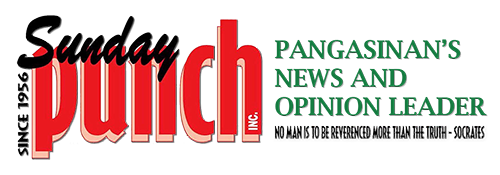Health officials warn vs. water safety in Pangasinan
CALASIAO–Beware: Water in Pangasinan is not safe.
The Ilocos regional director of the Department of Health (DOH) has revealed that water all across the province is contaminated with e-coli.
“There is no safe area actually, even your shoreline is positive of e-coli fecal contamination based on laboratory results,” said Dr. Eduardo Janairo during the First Water and Sanitation Meeting held last Friday at the Regency Hotel here.
He said the situation is already alarming because there is already a trend of epidemic in 2004 and 2008 “and we don’t want to have a very alarming situation in 2012.”
 “It is very easy to access water in Pangasinan but how safe the water is, that is a very big question,” Janairo said, citing the epidemic of water-borne diseases in 2004 and 2008.
“It is very easy to access water in Pangasinan but how safe the water is, that is a very big question,” Janairo said, citing the epidemic of water-borne diseases in 2004 and 2008.
Warning that another outbreak could possibly happen on or before 2012, he said, “We have to act now and do something for our water and sanitation or else in due time, probably in the next five years, we might be importing water from other provinces.”
Janairo said the situation needs to be addressed in three fronts: institutionalizing safe water management, proper toilet installation, and waste management as there are no sanitary landfills in Pangasinan except one in Bolinao.
He said about P764 million is needed for these and they hope local officials and private donors will readily extend support.
He said even water refilling stations are also becoming positive of e-coli, citing an incident in Dagupan City.
“So that means no matter how you try to keep your water safe, (but) with your surroundings dirty and your other sources also dirty , these will also be contaminated especially when it rains and there is flooding,” he said.
Below average access Health Secretary Francisco Duque III, in a message delivered by Undersecretary David Lozada, said the country faces a big challenge in providing basic water and sanitation services and in Pangasinan, access to water is still only at 82 percent, which is below the national average of 85 percent.
But of those with access to water in the province, only 0.2 percent actually get clean and safe water from their household faucets.
Pangasinan is in the list of “hotspots” for typhoid and cholera outbreaks and other water and food-borne diseases due to the yearly high incidence rate.
Governor Amado Espino Jr., for his part, said while health is a priority sector of his administration with projects like reconstructing simultaneously 14 hospitals under the provincial government and providing PhilHealth cards to about 130,000 indigent Pangasinenses, mayors and barangay chiefs must help in addressing the preventive side.
He said this starts with promoting clean surroundings and sanitary toilets.
“This is a very simple problem which needs a very simple solution and we can do it. We don’t need technical knowledge here, what we need here is focus and interest of our people in Pangasinan,” he said.
Among the provinces in the region, Pangasinan is particularly susceptible to the water problem because of the porousness of the land, the behavior of the people and three tributary rivers flowing in.
“We can’t do something about it (the physical landscape of Pangasinan) but we can do something about the behavior of the people and how we throw our garbage,” he said. #






